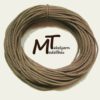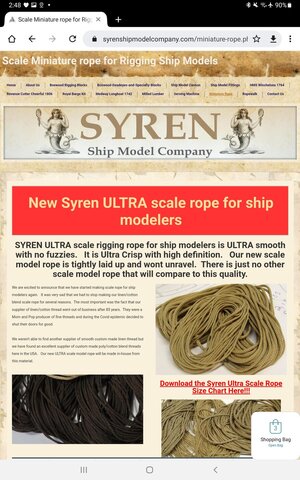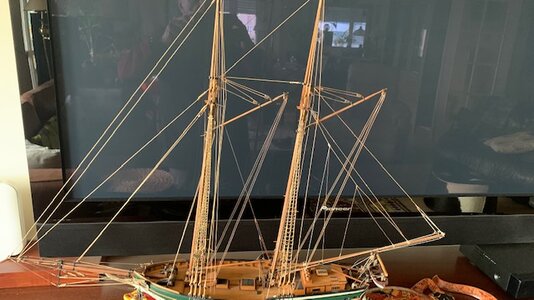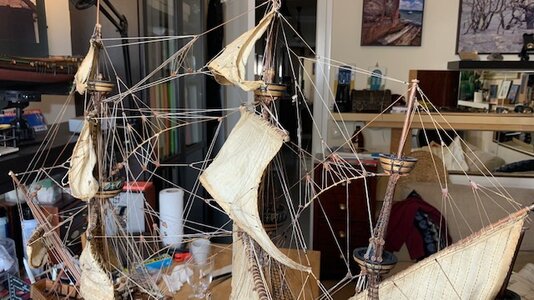I can't answer your original question, but I'd like to! I'm a long way off rigging my first wooden ship, but I'm already worried by the thread suppied with the kit... it's too thick for my liking.I'd like to replace it. I don't know about dust but I strongly suspect that any rigging will collect dust. Even if it doesn't the decks/crow's nests and fittings will! It won't really matter if your rigging is relatively free of dust, if what's behind it is covered in the stuff. I live in a house with a cat. They have beautiful silky and fine fur. They cast it and it floats around and sticks to anything!
Despite what you might have heard recently, drop-kicking your cat across the room like the English premiership footballer, Kurt Zouma, does not stop your models becoming infested with cat fur.* I'm going to build a case for my ship. I think that's the only way to keep it pristine.
Here's a link to a (possibly) interesting site.
https://www.banaschs.com/cotton-vs-polyester-thread/ I'd go cotton, because, as an engineer, I would guess that the negatives of cotton would be far outweighed by the the fact that plastics like polyethylene suffer massively from 'creep'. Creep, in engineering terms, is the propensity for a material to alter form over time, when exposed to a stress. This stress can be caused just by its own weight. I think that polyethylene will be prone to creep and may sag. Cotton, not so much. This would mean that you get your rigging looking fine with PE, but a year or two later it may sag.
What we need here is first-hand testimony from people who have used both threads.
My bet is cotton... we'll see!
* My cat seemed a bit wary in the last few days. I wondered if she had watched the news broadcasts with me: she was certainly in the room at the time. I reassured her that I didn't even like football, nor does my daughter. I had to tell her that I did not play in defense for West ham. She seemed to accept this testament and now my cat is back to pestering me for food and massgaes... phew!











